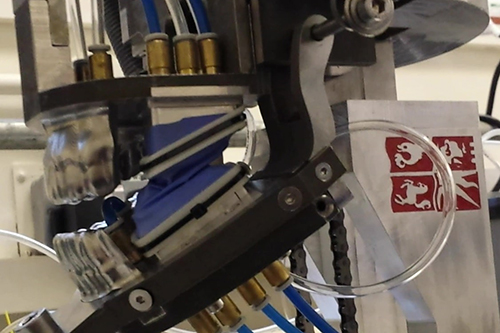The University of Bristol study aimed to find out whether a humanoid chewing robot could
The study wanted to compare the number ofxylitol remaining in chewing gum after testing on a chewing robot and humans. The expert group also wanted to estimate the amount of xylitol released from the chewing gum.
Scientists have discovered that a chewing robotdemonstrated the same xylitol release rate as the human subjects. The greatest release of xylitol occurred during the first five minutes of chewing, and after 20 minutes of chewing, only a small amount of xylitol remained, regardless of the chewing method used.
 Close-up of a humanoid chewing robot. Contributed by: Dr Kazem Alemzadeh, University of Bristol
Close-up of a humanoid chewing robot. Contributed by: Dr Kazem Alemzadeh, University of Bristol
Saliva and artificial saliva solutions were respectively collected after five, ten, 15 and 20 minutes of continuous chewing, and the amount of xylitol released from the chewing gum was determined.
A study by scientists showed that the new robotgives pharmaceutical companies the opportunity to explore medicinal chewing gum. This reduces the impact on the patient, and this method is also less expensive.
The study authors emphasize: the most convenient way of administering drugs to patients is by oral delivery methods. An experiment using a new humanoid environment could revolutionize the oral release and delivery of drugs to the human body.
Read also
Look at the huge “wall” of hundreds of thousands of galaxies behind the Milky Way
Comet NEOWISE is visible in Russia. Where to see her, where to look and how to take a photo
How T cells formed a new immunity against COVID-19 and changed statistics